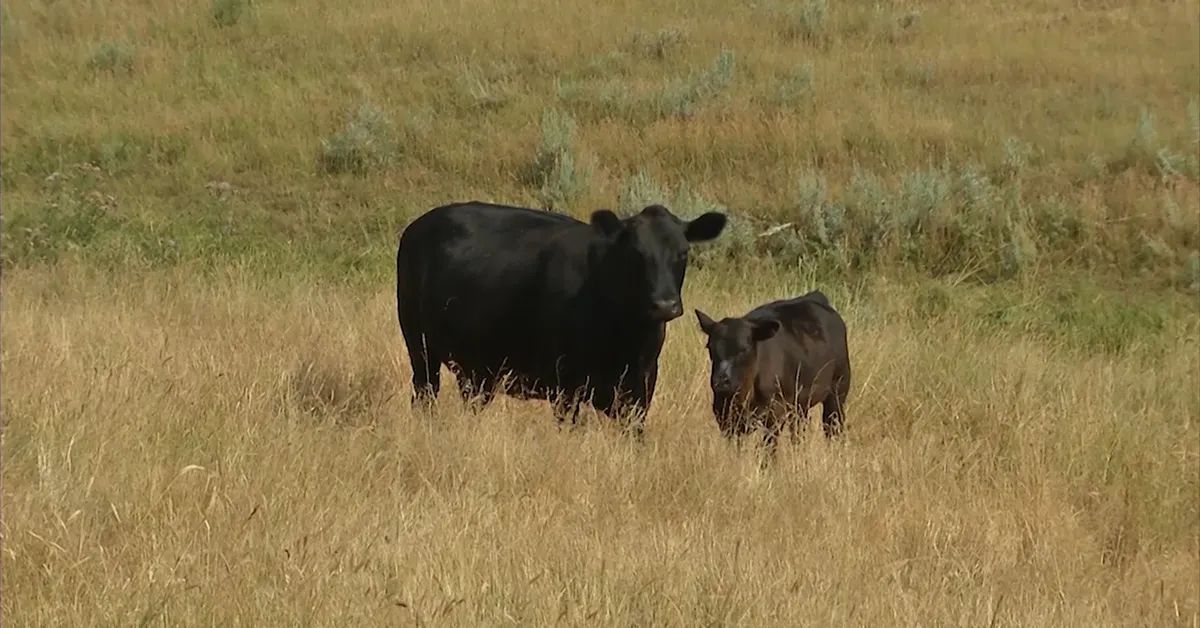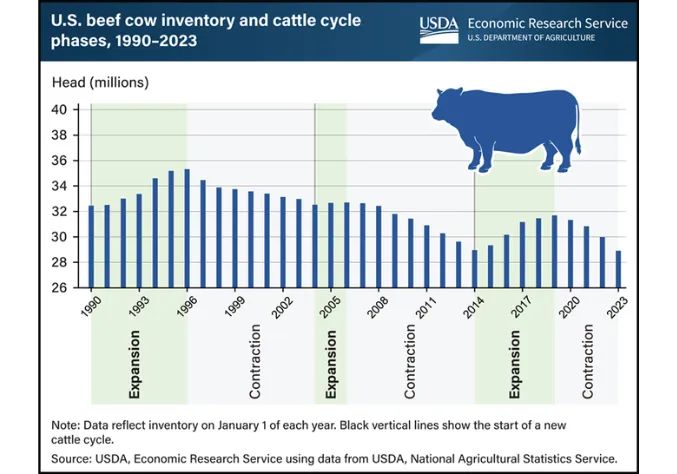
Cattle Cycle Uncertainty Looms As Drought Kicks Expansion Down the Road
April 27, 2023
The release of the Jan. 1 beef cow inventory to start 2023 painted a bleak picture—the result of widespread drought and herd liquidation across much of the nation in 2022.
In the ongoing cattle cycle—years of expansion followed by contraction—2022 proved to be a hard-hitting contraction year, as beef cow inventory reached a 60-year low.
The current cycle, which started in 2014, also following a significant drought, provided five years of steady expansion in beef cow numbers. However, only to be hit by another drought in 2020, the descent began.
Provided by USDA’s Economic Research Service (ERS), the following graph shows the total beef cow numbers by year, separating each cattle cycle by the expansion and contraction phases.

While each cycle has a slightly varied length, it tends to evolve gradually and last between eight to 12 years in length—following the biological nature of beef cattle production and cattle producers’ responses to price changes and weather conditions.
Drought Influence on Beef Cow Inventory
According to USDA-ERS, on Jan. 1, 2023, U.S. beef cow inventory was 28.9 million head – 3.6% less than the previous year.
Meanwhile, nearly 93% of U.S. beef cows were located in states where most of the pasture and range were rated in “very poor” to “fair” condition, based on USDA National Agricultural Statistics Service (NASS) data. Consequently, cattle producers faced record-high prices for non-alfalfa hay during the last two quarters of 2022 and in each month through the beginning of 2023, USDA-NASS reports.
As feed costs to maintain cattle continue to stress cattle producers’ bottom lines, a recent National Weather Service (NWS) forecast brings hope to some and more heartache to others.
The Season Drought Outlook, provided by the NWS Climate Prediction Center suggests drought is likely to persist in areas such as southeast Colorado and much of Kansas, Oklahoma and Texas, as these areas are so entrenched with drought that improvement will be difficult. The highest confidence for improvement exists across North Dakota, South Dakota, Nebraska, eastern Montana and Wyoming, the outlook adds.
Markets React
In the midst of what he claims to be “the bull market of his career,” Brad Kooima, co-owner of Kooima Kooima Varilek in Sioux Center, Iowa, says in a recent interview, “We’re going into the best demand period of the whole year.”
As this spring brings an increased demand in beef for consumers anticipating the season of summer grilling and barbeques, Koomia says the cattle on feed are not finishing as quickly as planned, due to severe weather. The tightness in supply may finally be trumping the packer who needs inventory, he adds.
The most recent USDA cattle on feed report, released April 21, shows cattle on feed totaled 11.6 million head on April 1, down 4.4% year over year, with 7.12 million steers (down 6%) and 4.5 million heifers (down 2%).
As drought persists, Derrell Peel, livestock economist and marketing specialist at Oklahoma State University, suggests that some producers may need to cull additional cows if conditions do not improve in the next few months. This will keep feeder supplies tight and prices well supported.
Meanwhile, Lee Schulz, Iowa State University Extension livestock economist, questions if the current cattle cycle looks like some of those in history where periods of declines in inventory and relatively strong prices held for several years. Or, he wonders, will the industry repeat the last cycle, where profits and higher prices are bid away rather quickly with dramatic expansion.
With year nine of the current cattle cycle well underway, the trend in beef cow inventory looks to remain fairly stable albeit with a continued, general decline in cattle inventory – a process that has been in place since 1975.
Will 2023 be another year of contraction and continued pushing off of a new cycle and the switch to expansion? The coming months, specifically in weather patterns and pasture conditions, will likely help determine this year’s fate.
Source: Drovers










